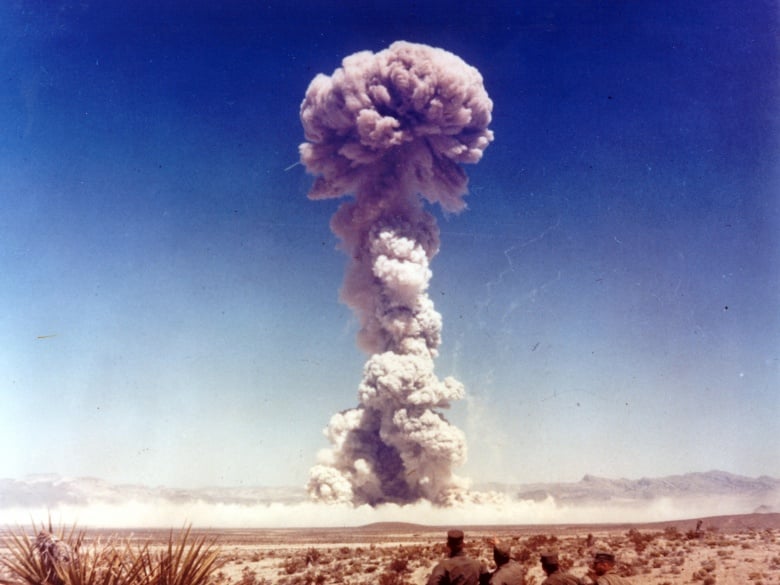The U.S. Military Is Missing 6 Nuclear Weapons
To date, the U.S. has six missing nuclear warheads out of thirty-two known Broken Arrow accidents, underscoring the existential threat posed by misplaced nuclear weapons.
What You Need to Know: The analysis highlights the perilous nature of "Broken Arrow" incidents—accidental events involving nuclear weapons. It details the 1958 Tybee Bomb incident, where a B-47 bomber jettisoned a fully armed Mark 15 hydrogen bomb near Tybee Island after a mid-air collision, with the weapon never recovered despite initial claims it was a simulation.

-Another significant event occurred in January 1966, when a B-28 thermonuclear bomb was lost in the Mediterranean Sea after a collision between two U.S. military aircraft, and its warhead remains unfound.
-To date, the U.S. has six missing nuclear warheads out of thirty-two known Broken Arrow accidents, underscoring the existential threat posed by misplaced nuclear weapons.
Broken Arrow: Missing Nuclear Weapons
The nuclear warhead is the most powerfully destructive manmade item in human history. The detonation of a single warhead could erase a city, and end millions of lives, in an instant. The detonation of several warheads, simultaneously, could kick up enough dust to block the sun and trigger a cataclysmic environmental event. Humankind has produced several thousands of these nuclear warheads, a few of which, happen to be missing.
The Tybee Bomb
February 1958. A B-47 bomber and an F-86 fighter collide off the coast of Georgia, near Tybee Island. The B-47 was carrying a 7,600-pound Mark 15 hydrogen thermonuclear bomb. The Mark 15 had an explosive yield of 3.8 megatons, 190 times more powerful than the Fat Man bomb, which leveled Nagasaki and forced Imperial Japan’s capitulation.
The F-86’s wing was shorn off, though thankfully, the pilot ejected safely. The B-47, however, had suffered damage that the pilot believed could cause the Mark 15 to drop unintentionally and detonate upon landing. So, the pilot jettisoned the Mark 15 into the waters of Wassaw Sound, near Tybee Island.
Using handheld sonar, over 100 Navy servicemembers searched for the jettisoned Mark 15. The search continued for two months, yielding no positive results. The Air Force assured the public that the bomb’s plutonium warhead had been removed before the flight and replaced with a lead simulation. But decades later, in 1994, documents released from a 1966 Congressional testimony revealed that the Tybee Mark 15 was indeed an intact nuclear weapon.
The Tybee bomb is hardly an isolated incident.
More Missing Nukes
“It was a mild winter’s morning at the height of the Cold War,” the BBC wrote. “On January 17, 1966, at around 10:30 am, a Spanish shrimp fisherman watched a misshapen white parcel fall from the sky…and silently glide towards the Alboran Sea. It had something hanging beneath it, though he couldn’t make out what it was. Then it slipped beneath the waves.”
The misshapen white parcel was one of four B28 thermonuclear bombs that had been dispersed after two U.S. military aircraft collided over the Mediterranean. Three of the B-28s were recovered on land, “but one had disappeared into the sparkling blue expanse to the southeast, lost to the bottom of the nearby swathe of Mediterranean Sea. Now the hunt was on to find it – along with its 1.1 megatonne warhead, with the explosive power of 1,100,000 tonnes of TNT.”

The warhead was never found.
To date, the U.S. is unable to locate six of its nuclear warheads.
Broken Arrow Problems
Tybee, and the Mediterranean incident, are just two of thirty-two known “broken arrow” accidents. Broken Arrow is military code for an accidental event that involves nuclear weapons, such as the loss of a nuclear weapon, or the accidental detonation of a nuclear weapon.
Something about the misplacement of a nuclear weapon is especially concerning. That the most destructive manmade force on the planet can be misplaced does not inspire great confidence in the survivability of our species.
About the Author
Harrison Kass is a defense and national security writer with over 1,000 total pieces on issues involving global affairs. An attorney, pilot, guitarist, and minor pro hockey player, Harrison joined the US Air Force as a Pilot Trainee but was medically discharged. Harrison holds a BA from Lake Forest College, a JD from the University of Oregon, and an MA from New York University. Harrison listens to Dokken.
Image Credit: Creative Commons and/or Shutterstock.


